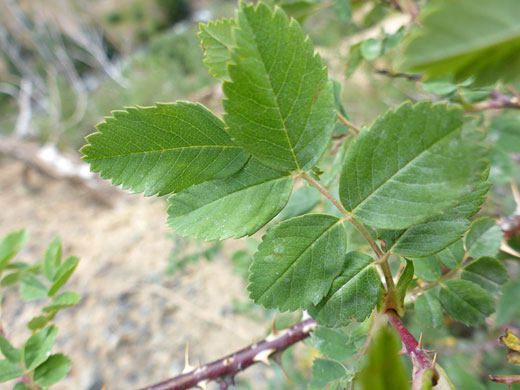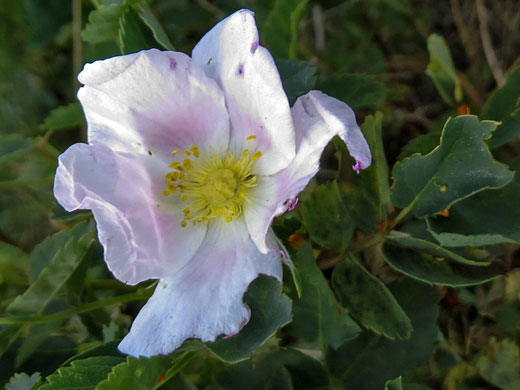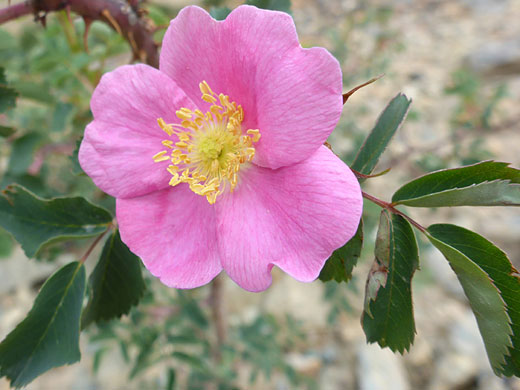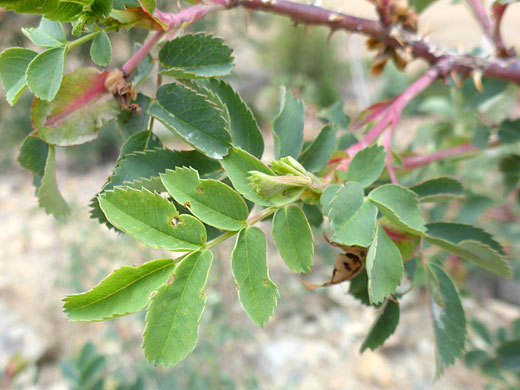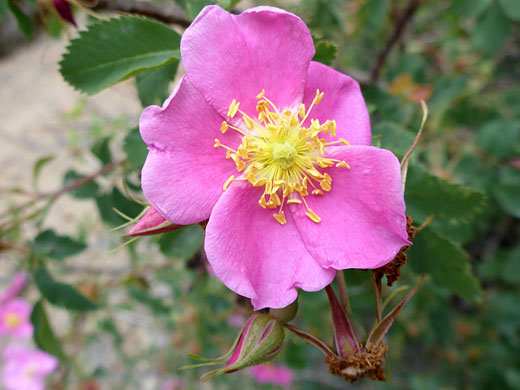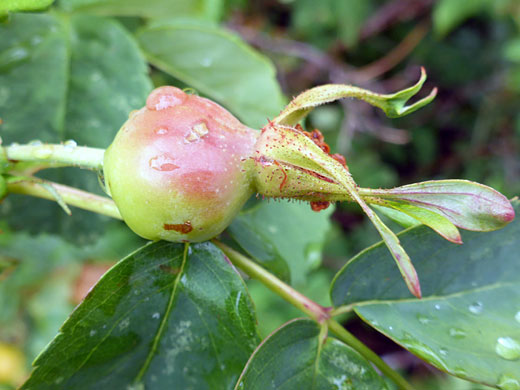Common name:
Woods' rose
Family:
Scientific name:
Rosa woodsii
Main flower color:
Range:
All the western states, though rare in the southern plains
Height:
Usually up to 6 feet
Habitat:
Woodland, prairie, roadsides, hillsides, riparian areas; up to 11,000 feet
Leaves:
Up to 4 inches long, divided into 5 or 7 ovate or obovate leaflets, lined by regular teeth
Season:
May to August
Flowers of rosa woodsii are large and pretty, though short-lived, lasting just a day or two. Plants are common across much of west and central USA, and are variable, with at least six subspecies recognized, differing in such aspects as growth form, prickle characteristics, leaflet shape and sepal glandularity.
Plants are shrubs, growing singly or in clumps, sometimes reaching heights of 15 feet or more, though usually around six feet. Clumps are more likely in riparian areas, such as streambanks. Branches have reddish bark, and are covered by prickles which may be straight, curved or hooked, and are usually less than a quarter of an inch long. Leaves are compound, with stipules at the base, one terminal leaflet and two or three opposite pairs of lateral leaflets. Leaflets are lined by up to 14 teeth, mostly above the middle. Leaf surfaces are usually hairless.
The inflorescence is an open, branched cluster, typically containing between one and ten flowers, each held on a stalk around one inch long. Flowers are about three inches in diameter, formed of five green, ovate to lanceolate sepals, five pale to dark pink petals, around 65 stamens and 20 to 40 carpels.
Plants are shrubs, growing singly or in clumps, sometimes reaching heights of 15 feet or more, though usually around six feet. Clumps are more likely in riparian areas, such as streambanks. Branches have reddish bark, and are covered by prickles which may be straight, curved or hooked, and are usually less than a quarter of an inch long. Leaves are compound, with stipules at the base, one terminal leaflet and two or three opposite pairs of lateral leaflets. Leaflets are lined by up to 14 teeth, mostly above the middle. Leaf surfaces are usually hairless.
The inflorescence is an open, branched cluster, typically containing between one and ten flowers, each held on a stalk around one inch long. Flowers are about three inches in diameter, formed of five green, ovate to lanceolate sepals, five pale to dark pink petals, around 65 stamens and 20 to 40 carpels.
All Contents © Copyright The American Southwest | Comments and Questions | Contribute | Site Map



